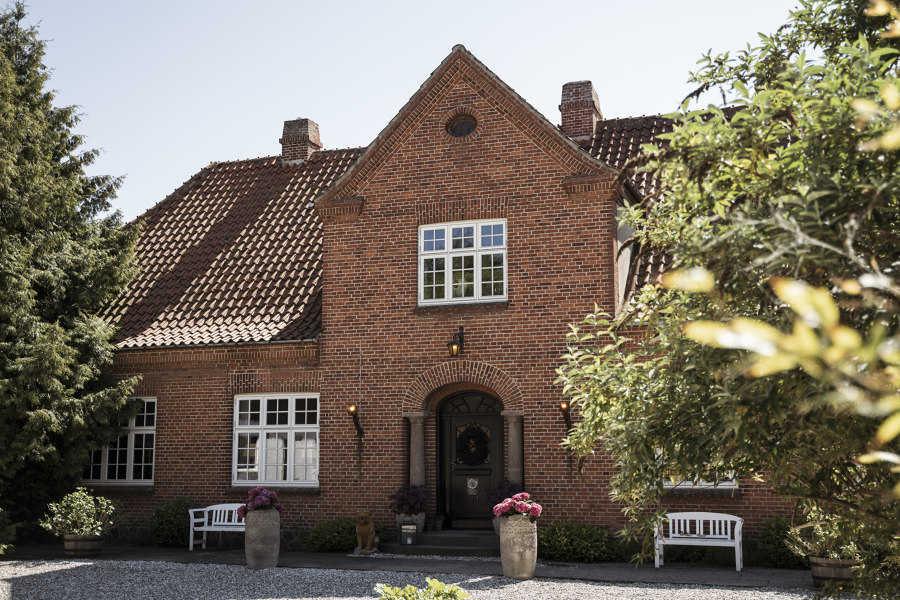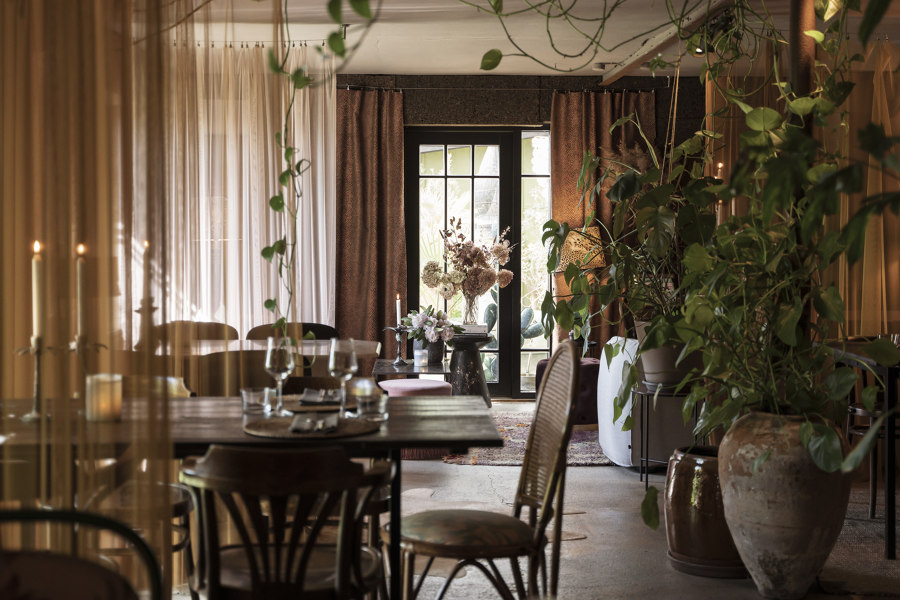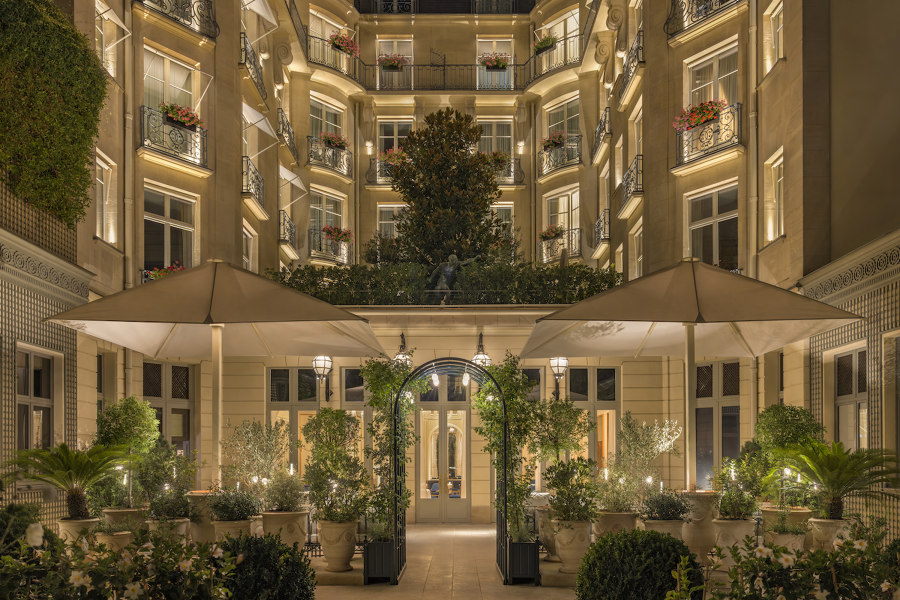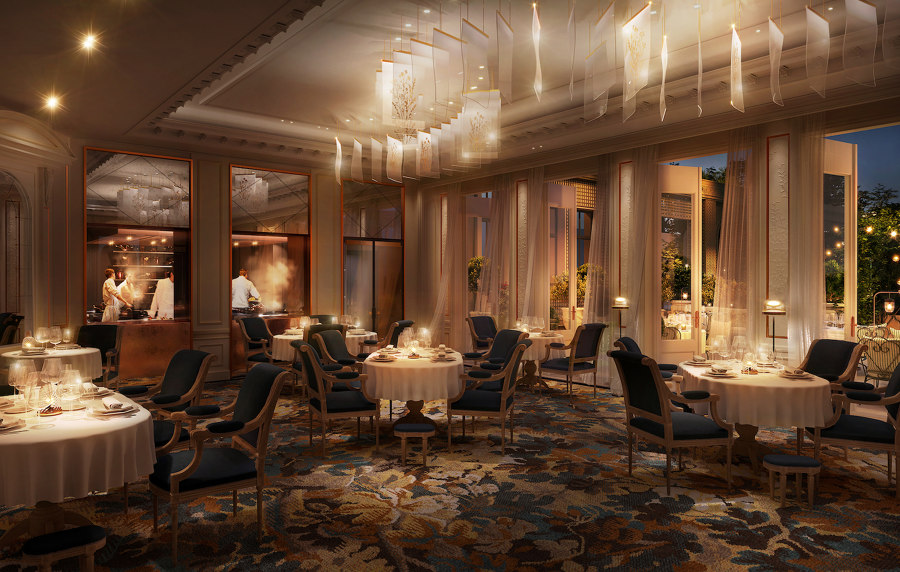Four restaurant interiors that serve up texture
Texto por Claire Brodka
05.01.24
When it comes to flavour, these projects from Europe and the United States don't just stick to the menu. Instead, a clever blend of materials transforms them into experiential spaces that entice patrons to linger a little longer.
Named after the legendary Club 82 drag artist, New York City's Ella Funt restaurant offers Neoparisian fine dining in a signature bar space that is crawling with rich textures courtesy of architect and designer Annabel Karim Kassar. Photo: Seth Caplan
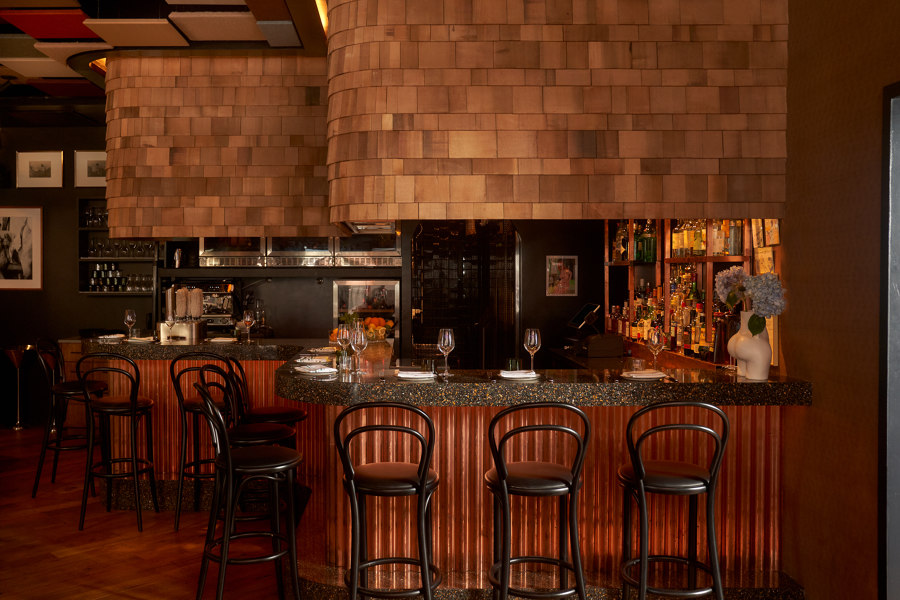
Named after the legendary Club 82 drag artist, New York City's Ella Funt restaurant offers Neoparisian fine dining in a signature bar space that is crawling with rich textures courtesy of architect and designer Annabel Karim Kassar. Photo: Seth Caplan
×In recent years, the line between overloading a restaurant interior and placing just enough intriguing accents around diners' tables to inspire a few well-framed photographs between courses has been considered thin at best. Overdone and the spatial accessories take away from the arguably much more important programming on the plate. Bare walls and white tablecloths alone, however, deny patrons the ever-important feeling of escapism and experience they're looking for.
The result: a prevailing aesthetic of luxurious minimalism with a few select, hard-hitting highlight pieces thrown in for good measure. But what if design caution was thrown into the wind along with the fear of what might happen if gastronomic surroundings were just as elaborate as their dishes? These four projects from Europe and the United States are examples of restaurant interiors that amplify their cuisine by celebrating abundance off the menu, too, – with unexpected textures, materials and surfaces.
---
The Norrmans Farmhouse in Klippinge, Denmark
All of the interiors at The Norrmanns Farmhouse have owner and designer Anna's signature touch, but the restaurant interweaves colours, textures and fabrics most dramatically for a cosy and whimsical dining interior. Photos: The Norrmans
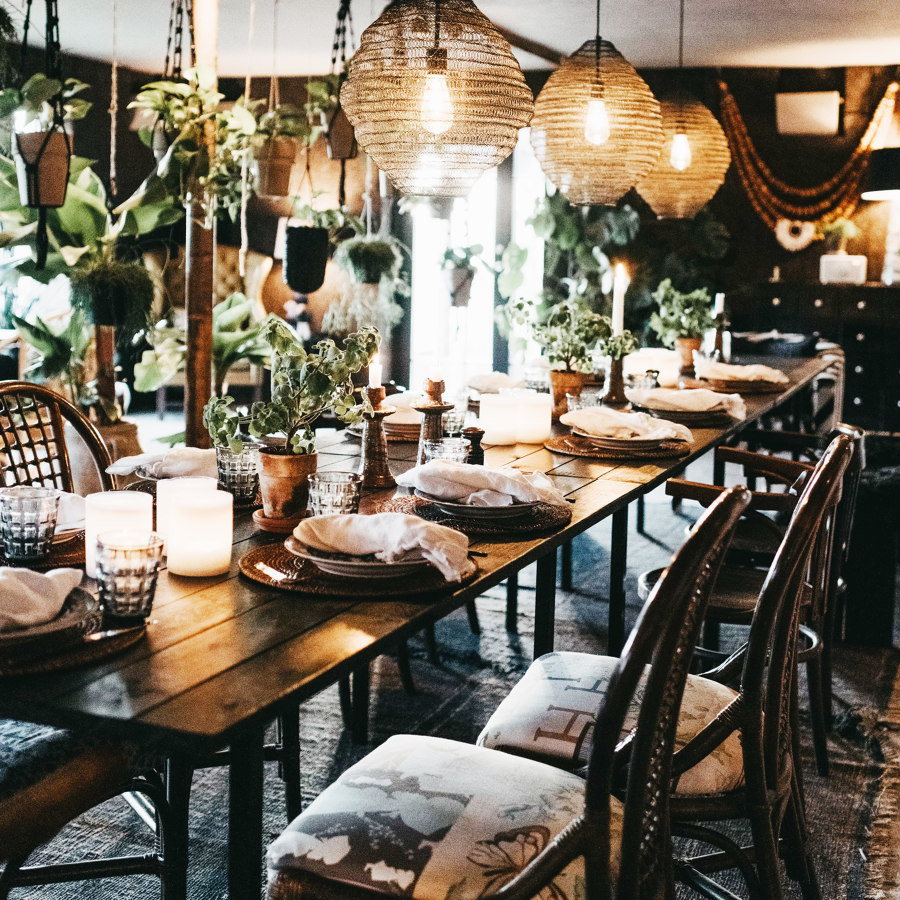
All of the interiors at The Norrmanns Farmhouse have owner and designer Anna's signature touch, but the restaurant interweaves colours, textures and fabrics most dramatically for a cosy and whimsical dining interior. Photos: The Norrmans
×Swedish-born designer Anna Norrman loves the Danes, but not so much that she's willing to blindly sign on to her adopted homeland's unequivocal endorsement of clean lines and functionality. Nowhere is that more obvious than at one of her two self-designed bed and breakfast locations, The Norrmans Farmhouse just half an hour's drive from Copenhagen. Nestled in the countryside, the building's red brick exterior does little to hint and the explosion of color and fabric within.
Natural fibres and wood accents are scattered throughout tableware and furniture for a maximalist space that alerts the senses even before the plates start piling up
The restaurant in particular bursts with playful patterns and textures. Cork lines the walls for insulation and moisture regulation, while whimsical room-divider curtains, dried plants and mix-and-match rugs on polished concrete flooring give the space a lived-in feel that belies chef Jouke Knijff's elevated, local fare. Natural fibres and wood accents are scattered throughout tableware and furniture for a maximalist space that alerts the senses even before the plates start piling up.
---
Espadon at the Ritz Hotel in Paris, France
With Espadon, Charles Ritz wanted to create a 'modern and demanding' restaurant. This legacy lives on in new stylistic references to the original design and the restaurant's first female head chef. Photos: Jerome Galland (top), Studio PAM
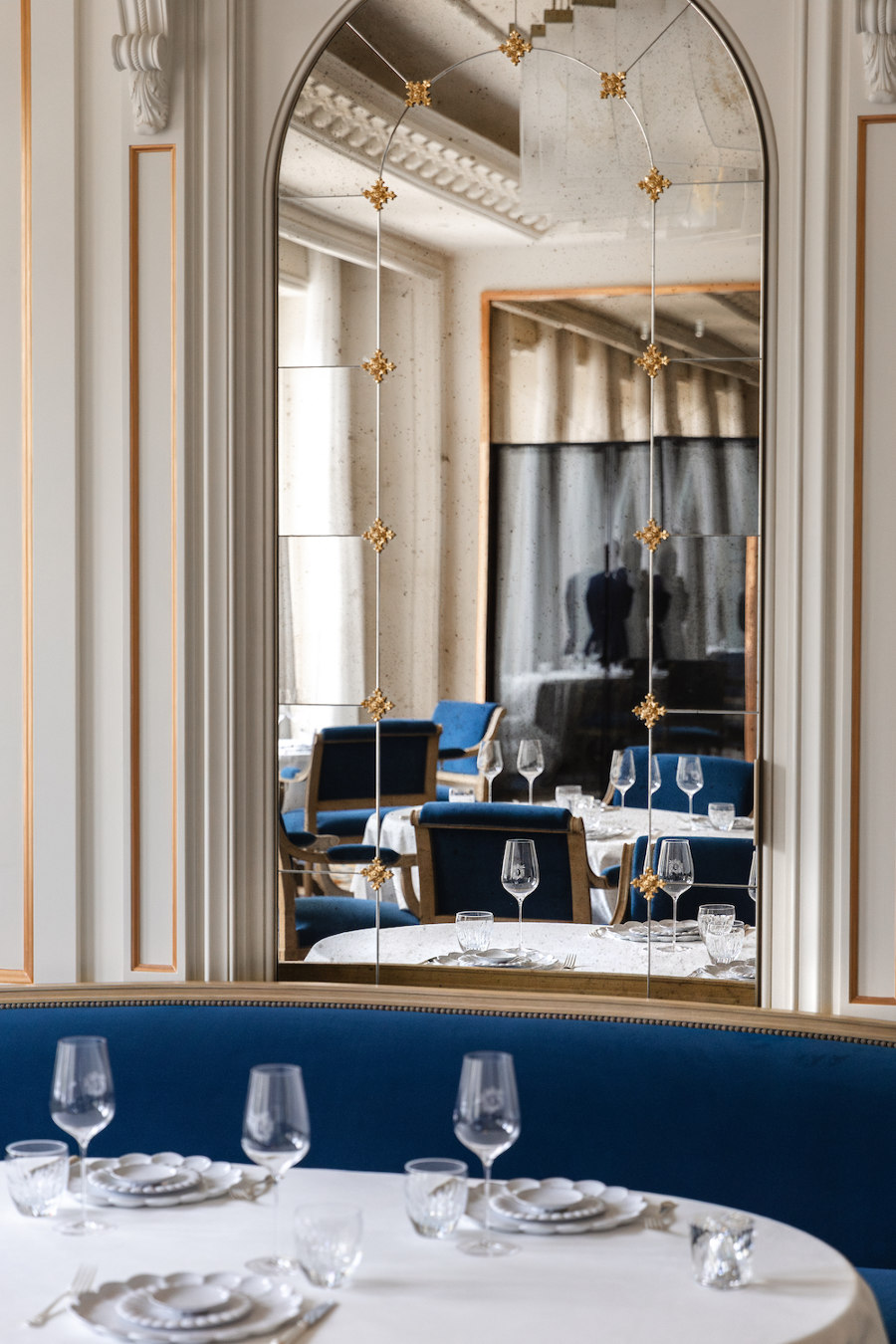
With Espadon, Charles Ritz wanted to create a 'modern and demanding' restaurant. This legacy lives on in new stylistic references to the original design and the restaurant's first female head chef. Photos: Jerome Galland (top), Studio PAM
×Change was afoot last year at the French capital's iconic Ritz. Its Espadon restaurant not only moved (back) to its original 1950s location, but also appointed its first-ever female chef in Eugénie Béziat. The new spatial design is heavily influenced by Béziat's personal history, and even before entering the intimate dining room, patrons are immersed in her love of nature through a hallway with a dimly backlit relief of wax rhubarb leaves by artist Mona Oren.
A delicious design assault on the senses that befits its reinvigorated dining approach
That first visual encounter crescendoes in the main restaurant’s copper mouldings and dramatic Braquenié plant motif carpet that echoes the vegetation in the adjacent hotel garden. Individual sheets of a Bohemian crystal light fixture run across the ceiling, evoking pages in an imagined culinary herbarium. Antique wall mirrors with gold hardware accents flank blue velvet seating arrangements that nod to the hotel's maritime namesake (and reference Jean Pascaud's original furniture), and a live cooking spectacle is constantly visible through the kitchen’s hammered copper bay windows. A delicious design assault on the senses that befits its reinvigorated dining approach.
---
Vækst in Copenhagen, Denmark
Aside from the impressive greenhouse structure, Vækst wins patrons over with a sensual mix of interior materials and greenery that reflect the curated menu. Photos: Chris Tonnesen
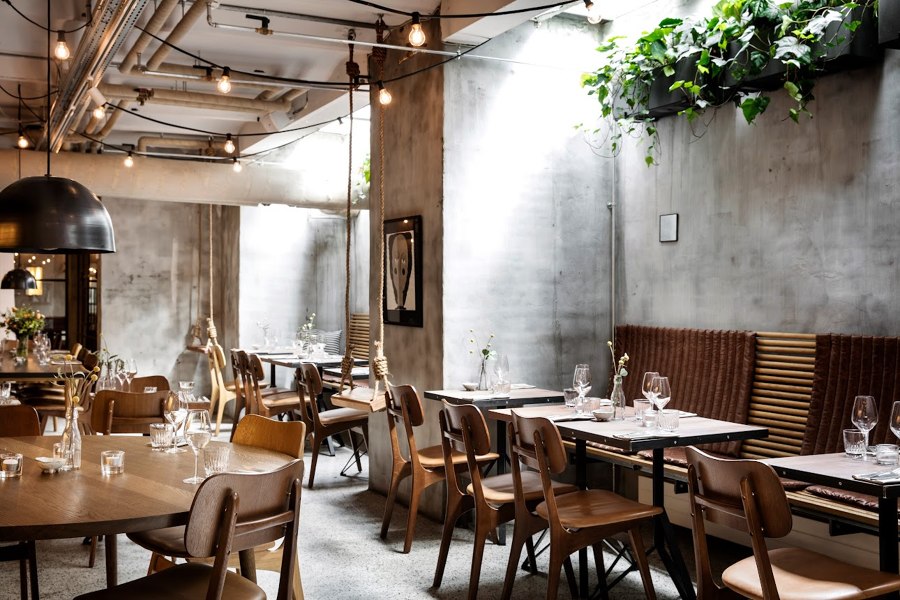
Aside from the impressive greenhouse structure, Vækst wins patrons over with a sensual mix of interior materials and greenery that reflect the curated menu. Photos: Chris Tonnesen
×Located in the middle of Copenhagen’s old Latin quarter, Vækst is part of the city's innovative food collective Cofoco. Designed with Danish recycled materials expert Genbyg, the restaurant's decor is centered around an extravagant, two-storey greenhouse made from repurposed windows that also hides the space's central staircase. Recycled wood abounds in the rest of the space, too, as well as hanging plants and overhead string lights that lend an air of romanticism to the industrial ceilings on both floors.
Though not immediately maximalist, it is the textural details that slowly accumulate into a rich and layered spatial experience
Though not immediately maximalist, it is textural details such as the green-painted grid pattern on the wood flooring, leather backrests and decorative swings hung from natural fibre rope that slowly accumulate into a rich and layered spatial experience. By juxtaposing organic materials, natural stone and a true profusion of plants with select metal accessories and light fixtures, Vækst immerses patrons in a world of its own that underlines the regionality and environmental focus reflected in the restaurant's menu.
---
Ella Funt in New York City, United States
Ella Funt's moody interior has its fair share of stand-out spaces, with the uniquely designed bathrooms (middle and bottom) and signature bookshelf recalling the location's disco past. Photos: Seth Caplan
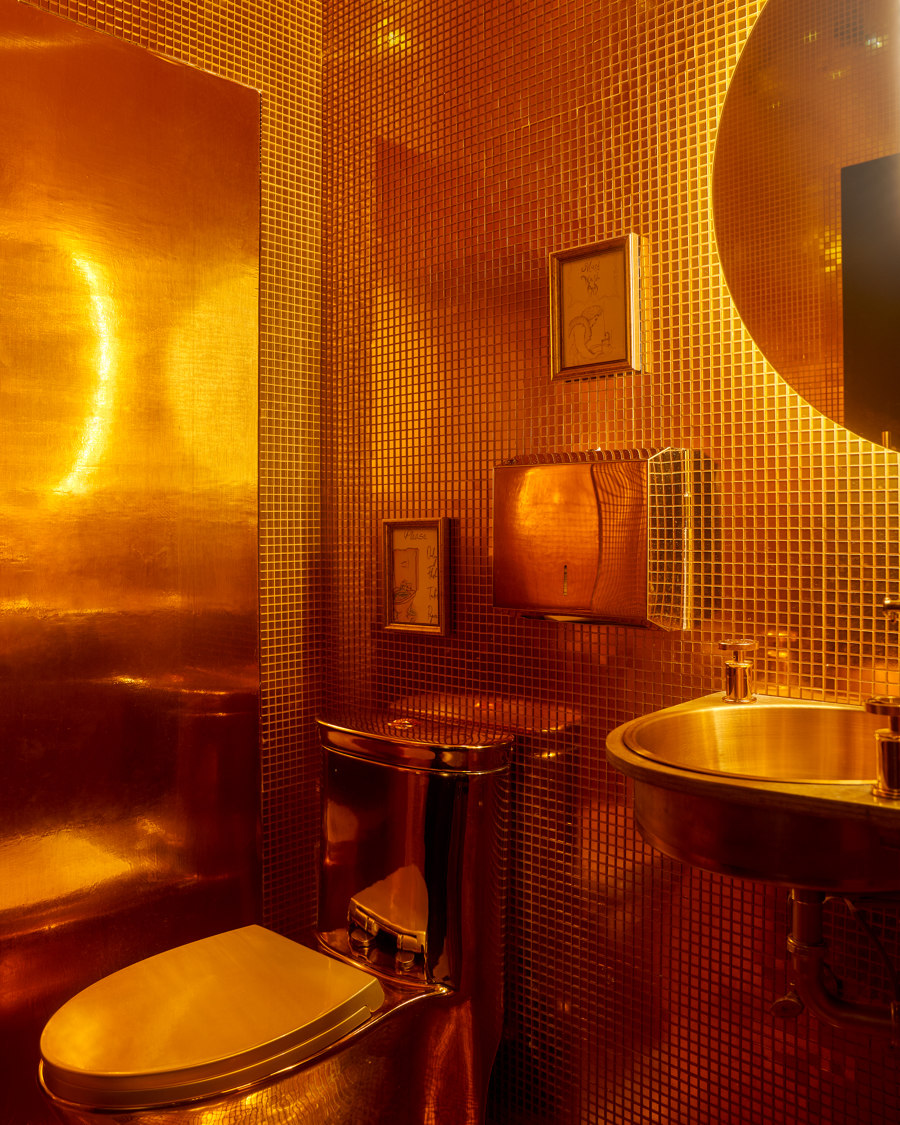
Ella Funt's moody interior has its fair share of stand-out spaces, with the uniquely designed bathrooms (middle and bottom) and signature bookshelf recalling the location's disco past. Photos: Seth Caplan
×Where Vækst is a design exercise in delayed gratification, New York's new hot spot Ella Funt makes its theatricality known even to passersby, who can't help but spot the restaurant's dramatic interiors through its oversized street-side windows. French Lebanese architect and designer Annabel Karim Kassar thinks of the space as a strategic jewellery box of interlocking volumes, which include a shingled main bar with shiny copper base and terrazzo countertop, 'gold toilet' and a bathroom wallpapered floor-to-ceiling with drawings by Karim Kassar herself.
Ella Funt makes its theatricality known even to passersby, who can't help but spot the restaurant's dramatic interiors through its oversized street-side windows
An immersive large-scale mural by artist Marcus Jahmal flanks one side of the main dining space, only narrowly outbid for opulence by the adjoining bookshelf. Containing a window into the kitchen, the structure follows the crooked ceiling line and is filled with objects that invoke the space's illustrious past as one of New York City's most beloved nightlife institutions Club 82. A marble table, green velvet backrests and textile-wrapped acoustic ceiling tiles unite the interior's sensual blend of colour, light and material texture. In line with its offer of French bistro cuisine, Ella Funt is dizzying and romantic – a place to linger, and a testament to maximalism at its most effective.
© Architonic
Head to the Architonic Magazine for more insights on the latest products, trends and practices in architecture and design.

